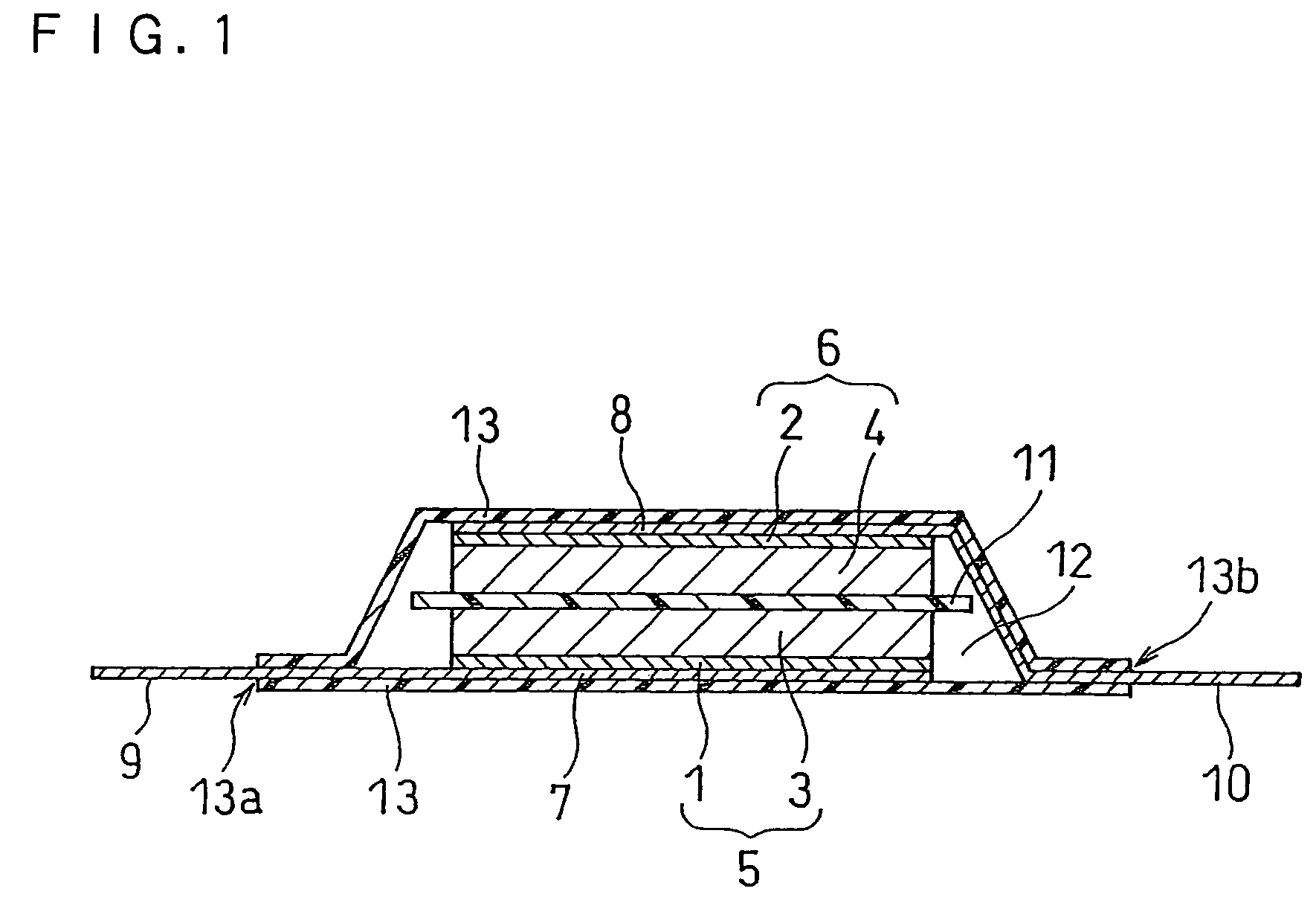Electric double layer capacitor
a double-layer capacitor and capacitor technology, applied in the direction of hybrid capacitor terminals, electrolytic capacitors, electrolyte generators, etc., can solve the problems of reducing the storage characteristics, reducing the conductivity of the electrolyte, and deteriorating the electrolyte itself, so as to prevent the adsorption of phosphazene compounds, reduce the conductivity, and increase the viscosity of non-aqueous electrolyte
- Summary
- Abstract
- Description
- Claims
- Application Information
AI Technical Summary
Benefits of technology
Problems solved by technology
Method used
Image
Examples
examples 12 to 24
[0072]A non-aqueous electrolyte was obtained by mixing N,N,N-trimethyl-N-propyl-bis[trifluoromethanesulfonyl]imide (TMPA-TFSI) as an ionic liquid, a phosphazene compound represented by the above chemical formula (2), and a cyclic or linear carbonate having a C═C unsaturated bond in a mole ratio of 1:0.1:0.01. For the cyclic carbonate having a C═C unsaturated bond, vinylene carbonate (VC), vinylethylene carbonate (Vec), divinylethylene carbonate (DVec), phenylethylene carbonate (Pec), and diphenylethylene carbonate (DPec) were used respectively. For the linear carbonate having a C═C unsaturated bond, methylvinylcarbonate (MVC), ethylvinylcarbonate (EVC), divinylcarbonate (DVC), allylmethylcarbonate (AMC), allylethylcarbonate (AEC), diallylcarbonate (DAC), allylphenylcarbonate (APC), and diphenylcarbonate (DPC) were used, respectively.
[0073]Electric double layer capacitors 12A to 24A of the present invention were made in the same manner as Example 3 by using these non-aqueous electrol...
examples 25 to 28
[0077]A non-aqueous electrolyte was obtained by mixing the following in a mole ratio of 1:0.1:0.01:0.1: N-methyl-N-propylpiperidinium-bis[trifluoromethanesulfonyl]imide (PP13-TFSI) as an ionic liquid; a phosphazene compound represented by the above chemical formula (2); vinylethylene carbonate (Vec) as a carbonate having a C═C unsaturated bond; a cyclic carbonate having a C═O bond and a saturated bond, or a γ-butyrolactone (γ-BL) as a cyclic ester having a C═O bond and a saturated bond. For the cyclic carbonate having a C═O bond and a saturated bond, ethylene carbonate (EC), propylene carbonate (PC), and butylene carbonate (BC) were used respectively.
[0078]Electric double layer capacitors 25A to 28A of the present invention were made in the same manner as Example 12 by using these non-aqueous electrolytes.
example 29
[0079]An electric double layer capacitor 29A of the present invention was made in the same manner as Example 25 except that Vec was not added to the non-aqueous electrolyte.
PUM
 Login to View More
Login to View More Abstract
Description
Claims
Application Information
 Login to View More
Login to View More - R&D
- Intellectual Property
- Life Sciences
- Materials
- Tech Scout
- Unparalleled Data Quality
- Higher Quality Content
- 60% Fewer Hallucinations
Browse by: Latest US Patents, China's latest patents, Technical Efficacy Thesaurus, Application Domain, Technology Topic, Popular Technical Reports.
© 2025 PatSnap. All rights reserved.Legal|Privacy policy|Modern Slavery Act Transparency Statement|Sitemap|About US| Contact US: help@patsnap.com



